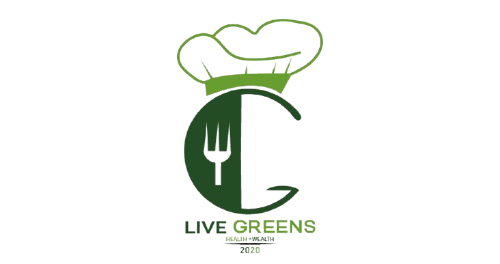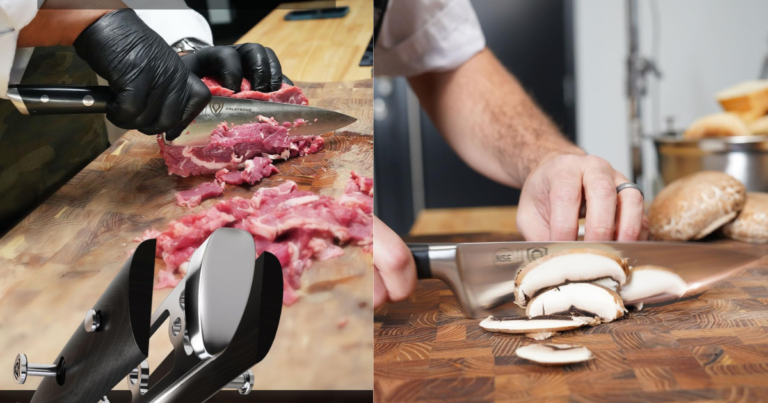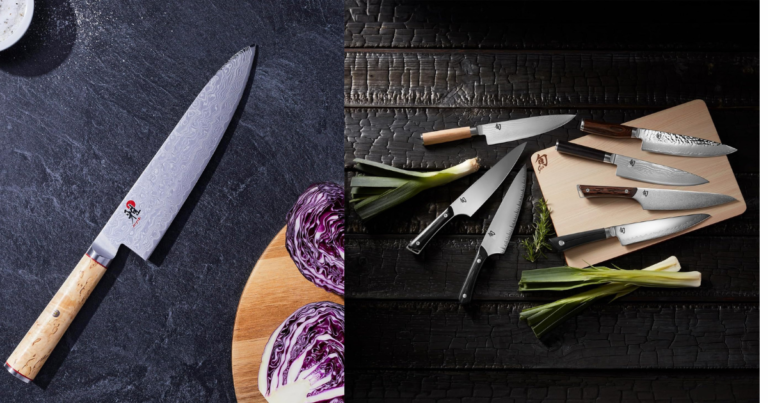How do I Get the Smell out of My Wooden Chopping board?
I can’t cook when my cutting/chopping board is smelly. The smell of garlic, onions, or raw meat is really irritating, and I feel like running off from the kitchen or throwing my cutting board outside. But cooking is almost impossible without a chopping board.
So…with that being said, I can feel you when your chopping board is malodorous.
In this blog post, I will share everything I use to keep my cutting board fresh and clean.
Let’s get into it.
Why Do Wooden Chopping Boards Retain Smells?
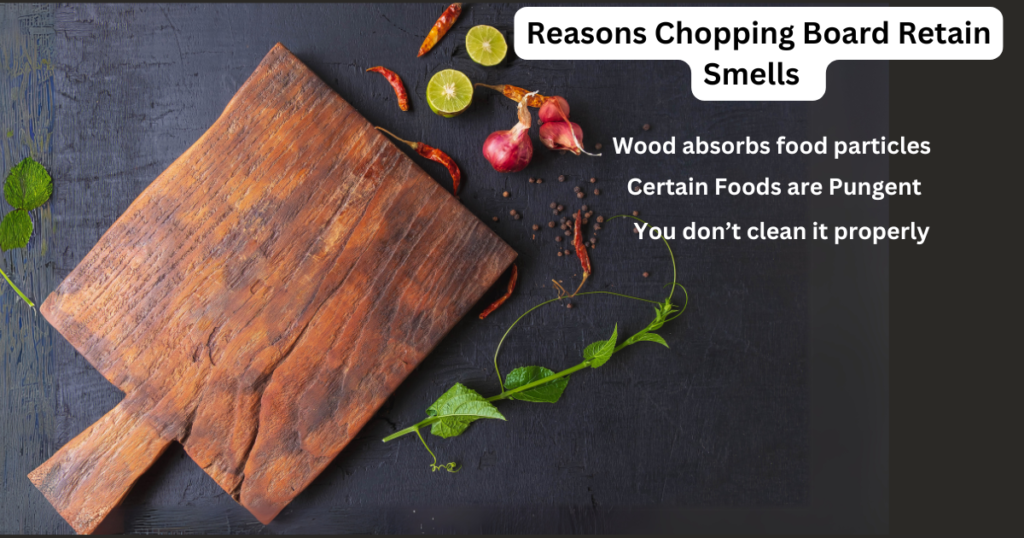
Here are the three primary reasons your chopping boards catch smell.
- Wood absorbs moisture and food particles.
Wooden boards are naturally porous, soaking up juices and oils from food. Over time, these trapped particles can break down and release unpleasant smells that are hard to remove.
- Certain foods leave strong odors behind.
Some ingredients like onions, garlic, fish, and raw meat leave a smell behind. And if you don’t clean the board immediately after cooking recipes with these ingredients, their smell clings to the board.
- Improper cleaning habits can worsen odor buildup over time.
Skipping a thorough scrub or leaving the board wet after use causes bacteria and food particles to settle deeper into the wood. This causes smells and also makes the board unhygienic.
Best Natural Ways to Remove Smells from Wooden Chopping Boards
Here are some easy methods you can try without purchasing chemicals or expensive soaps at home. I use most of them to keep my wooden chopping board fresh and odor-free.
1. Lemon and Salt Scrub
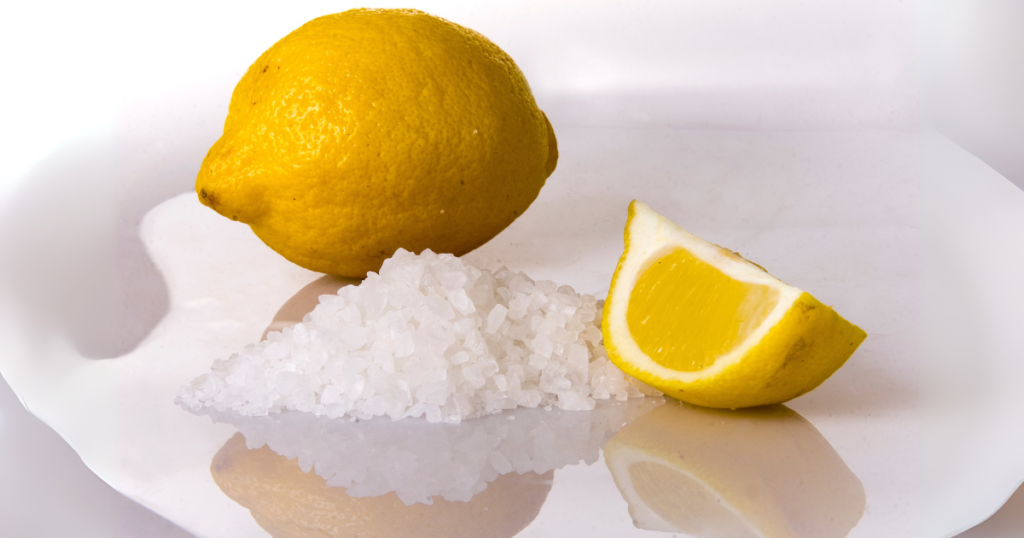
Lemon has natural antibacterial and deodorizing properties, while the salt acts as an abrasive to lift trapped particles.
How to use it: Sprinkle coarse salt generously over the board. Cut a lemon in half and scrub the board in circular motions using the cut side. Focus on areas with strong odors. Rinse thoroughly with warm water and dry immediately.
Baking Soda Paste
Baking soda neutralizes odors and draws out absorbed oils and food particles.
How to use it: Mix baking soda with a small amount of water to create a thick paste. Spread the paste evenly across the board and scrub gently using a soft brush or sponge. Rinse with warm water and dry thoroughly.
3. White Vinegar Solution
You need to be careful when using this method. Do not soak the board for long periods; otherwise, your chopping board could crack.
How to use it: Combine equal parts white vinegar and water in a bowl. Wipe the board with a clean cloth soaked in the solution, or for more pungent odors, let the board sit in the mixture for 2-3 minutes. Rinse immediately with warm water and dry thoroughly.
4. Sun Drying
Sunlight naturally kills bacteria and helps evaporate any lingering moisture, reducing odors.
How to use it: After washing your chopping board, place it in direct sunlight for a few hours. Ensure both sides are exposed to the sun.
5. Activated Charcoal or Coffee Grounds
Both charcoal and coffee absorb and neutralize strong odors effectively.
How to use it: Place the cutting board in a large, sealable bag. Add a small bowl of activated charcoal or a handful of dry coffee grounds to the bag. Seal it tightly and leave it overnight.
Cleaners and Soaps to Remove Smells From Wooden Chopping Board
I prefer eco-friendly cleaners and soaps. I choose food-safe, biodegradable cleaners, especially if I have to cater for a corporate event.
- Specialized Cutting Board Cleaners
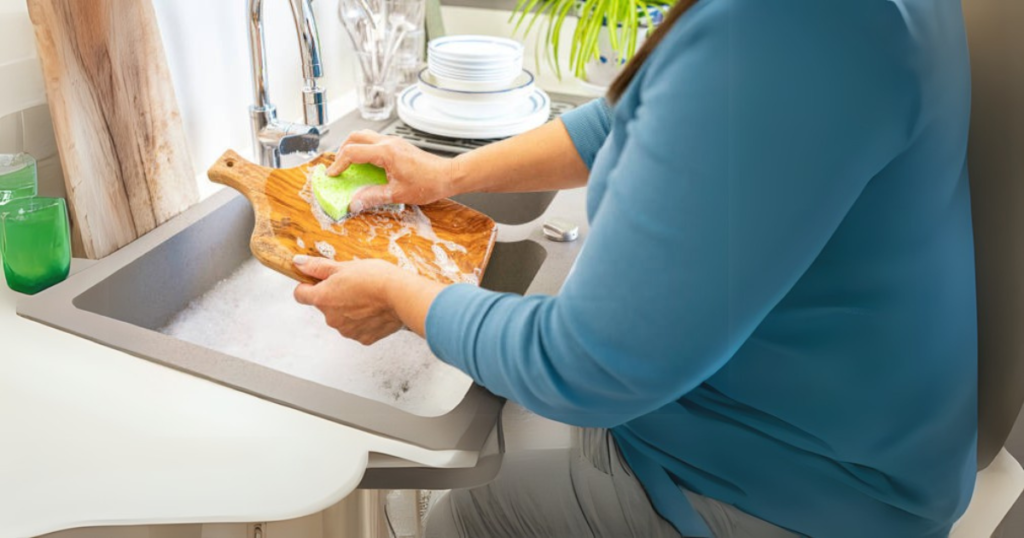
Specialized cutting board cleaners are designed to clean and deodorize wooden surfaces without causing damage. These are typically made with food-safe ingredients that break down odors and bacteria. These cleaners effectively remove deep-seated smells and stains while gently cleaning the wood.
How to use: Apply a small amount of cleaner to the board. Scrub with a soft sponge or brush, focusing on areas with strong odors. Rinse thoroughly with warm water and dry immediately.
Mild Dish Soap and Warm Water
Mild dish soap is a safe and accessible option for regular cleaning. It effectively removes surface oils and food particles, cutting through grease and grime without stripping the wood of its natural oils.
How to use: Add a few drops of dish soap to warm water. Use a soft sponge to scrub the board gently, covering all areas. Rinse with clean water and dry with a towel.
3. Hydrogen Peroxide for Stubborn Smells
Hydrogen peroxide is a powerful deodorizer and disinfectant. It is perfect for tackling tough odors. But use hydrogen peroxide sparingly to avoid drying out the wood. Always follow up with seasoning if the board feels rough or dry.
How to use: Dilute hydrogen peroxide with an equal amount of water. Soak a clean cloth in the solution and wipe the board thoroughly. Let it sit for 5-10 minutes, then rinse with warm water and dry completely.
If you are a professional chef, natural ways won’t always be handy. And sometimes you will need more than one cutting board. So that’s when you need quick and fast cleaning methods.
I use a separate cutting board for my weekly chef services for each client.
And for big events like wedding catering, I need to use more than one chopping board.
How I Prevent Smells on My Wooden Chopping Board
They say precaution is better than cure. Why let your cutting board get smelly in the first place? I use five foolproof tactics to keep my wooden chopping boards fresh and odor-free.
- I Use a Protective Layer
The oil creates a protective barrier and reduces the absorption of food particles and moisture that can cause odors.
So, I apply food-grade mineral oil to my board every few weeks. I rub a generous amount of oil into the surface with a clean cloth and let it absorb overnight. The next day, I wipe off any excess oil.
- I Use Separate Boards for Different Foods
This prevents strong-smelling foods like raw meat or onions from transferring odors to foods like fruits.
So, I keep different boards for meat, vegetables, and fruits. To make things easier, I label or color-code them.
- I Clean My Board Immediately After Use
Quick cleaning stops food particles and juices from soaking into the wood and reduces the chance of odors forming.
So, as soon as I’m done using the board, I rinse it with warm water and mild dish soap. Then, I dry it thoroughly with a clean towel.
- I Avoid Cutting Smelly Foods Directly on the Board
This keeps the board from coming into direct contact with odor-causing foods.
So, for items like garlic or fish, I place a small silicone mat or parchment paper on the board before cutting.
Once I’m done, I discard the mat or paper.
- I Store My Board Properly
Proper storage prevents moisture buildup, which can lead to odors and bacterial growth.
S,o I always store my board in a dry, well-ventilated area. I never stack it with wet items or leave it in a damp sink.
The Recommended Smell Resilient Cutting Board Materials
A cutting board’s odor retention, maintenance, and durability depend on its material.
Here’s what you need to know about the most common types:
Wooden Cutting Boards
Many home chefs favor wooden boards. They’re gentle on knives, durable, and add a classic touch to any kitchen.
But they are porous, which means they can absorb food particles and odors if not properly maintained.
So, if you choose a wooden cutting board, it will need regular oiling and prompt cleaning to stay in top shape.
Plastic Cutting Boards
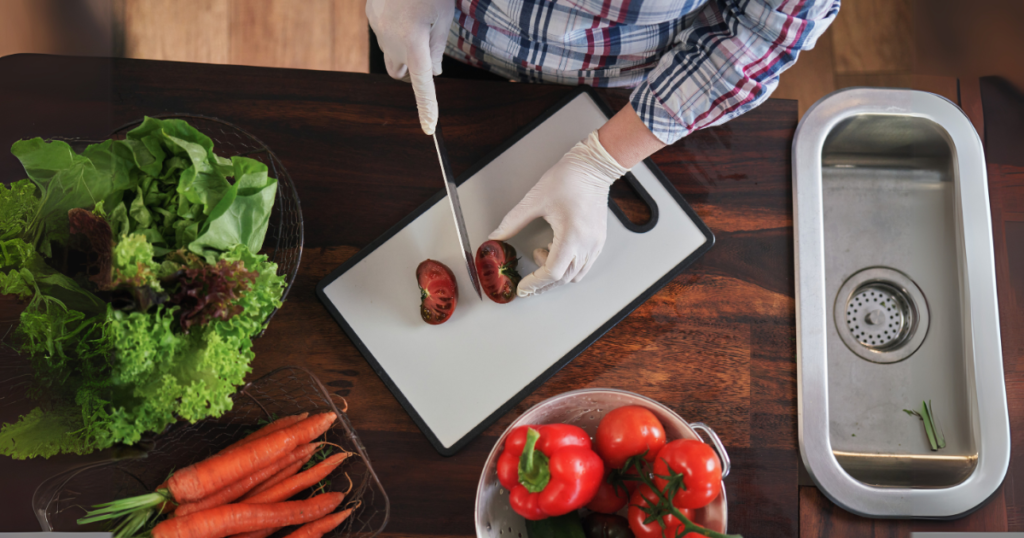
Plastic boards are non-porous, which makes them less likely to absorb odors. They are also easier to sanitize with dishwashers or cleaning solutions.
But they are prone to knife scratches, which can trap food particles and bacteria over time. So you’ll need to replace your plastic cutting board if they get excessively scratched.
Composite and Bamboo Boards
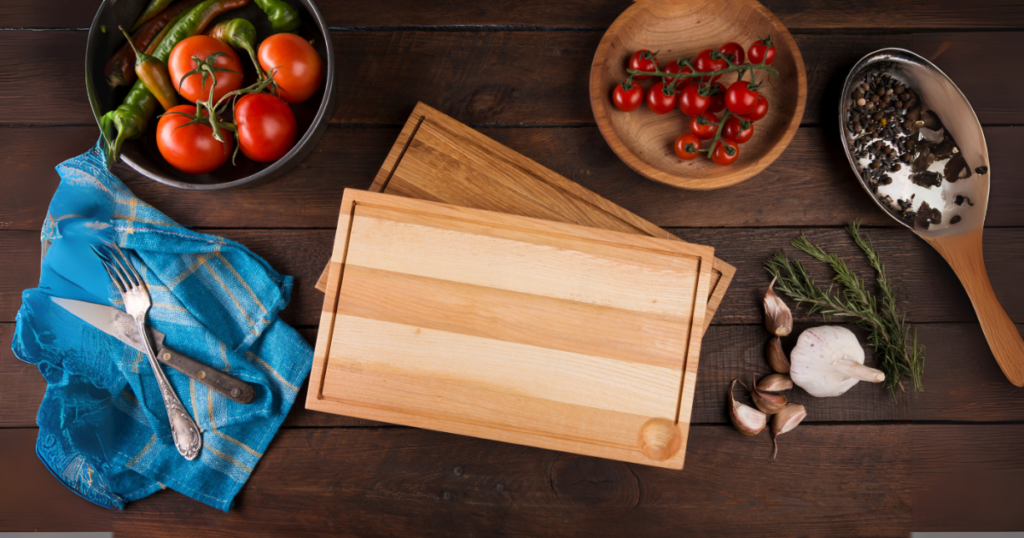
Composite boards are a blend of wood fibers and resin. Their non-porous surface resists odors better than traditional wood. They’re also highly durable but can be harder on knives.
On the other hand, bamboo boards are lightweight, eco-friendly, and less porous than traditional wood. But they can dry out and crack without regular oiling.
Here’s a comparison table to help you choose the best cutting board.
| Material | Odor Retention | Durability | Knife-Friendliness | Maintainance |
| Wooden | Moderate (if untreated) | High | Very gentle | Regular oiling required |
| Plastic | Low | Moderate (prone to scratches) | Gentle | Easy to clean; replace when scratched |
| Composite/Bamboo | Low | High | Moderate to gentle | Regular oiling for bamboo; minimal for composite |
Protect Your Cutting Board from Knife Scratches
These three simple steps will keep your cutting board smooth, functional, and long-lasting.
Proper Knife Usage
Always use a sharp knife. A dull blade requires more pressure and it increases the chances of deep scratches on your cutting board. Sharpen your knives regularly to keep them in optimal condition.
Regular Maintenance
Lightly sand the surface of your wooden cutting board every few months to remove deep scratches. Use fine-grit sandpaper, then reapply food-grade mineral oil to restore the board’s protective layer.
Avoid Excessive Force
Practice controlled cutting techniques. Let the knife do the work instead of applying unnecessary force. Avoid heavy chopping or pounding, especially with delicate boards like bamboo or composite.
When and How to Clean and Season Your Wooden Cutting Board
Signs Your Board Needs Cleaning or Seasoning
You don’t need to season your cutting board every other day. But if your cutting board emits persistent odors, feels rough, or appears dry, it’s time for a deep clean and seasoning.
A dull surface or cracks forming indicate that your board needs attention.
How to Season a Cutting Board
Step 1 – Clean: Wash the board thoroughly with warm water and mild soap. Let it air dry completely.
Step 2 – Apply Oil: Use a clean cloth to apply a generous amount of food-grade mineral oil or your preferred seasoning oil. Cover the entire surface, including the edges.
Step 3 – Let It Soak: Allow the oil to soak overnight. For very dry boards, apply a second coat after a few hours.
Step 4 – Buff: Wipe any excess oil with a clean, dry cloth, leaving a smooth, moisturized finish.
Best Oils for Seasoning
- Mineral Oil: This oil is best for cutting boards due to its affordability, non-toxicity, and odorlessness.
- Beeswax: You can combine this oil with mineral oil for added moisture and a protective coating.
- Fractionated Coconut Oil: It’s non-perishable, easy to apply, and offers excellent protection without leaving a strong scent.
These oils penetrate the wood deeply, creating a barrier that repels moisture and prevents odors. This keeps your cutting board in excellent condition.
Final Thought: Hygiene Should Be the First Priority of a Chef
Your cutting board is probably the most important cooking tool in your kitchen. If you are not taking care of it, forget flavorful dishes. So make cleaning your chopping board daily a habit. Also, a clean cutting board reflects your commitment to quality and care.
I have been a professional chef for over 15 years. If you are passionate about cooking, my blog page can be a helpful resource.
